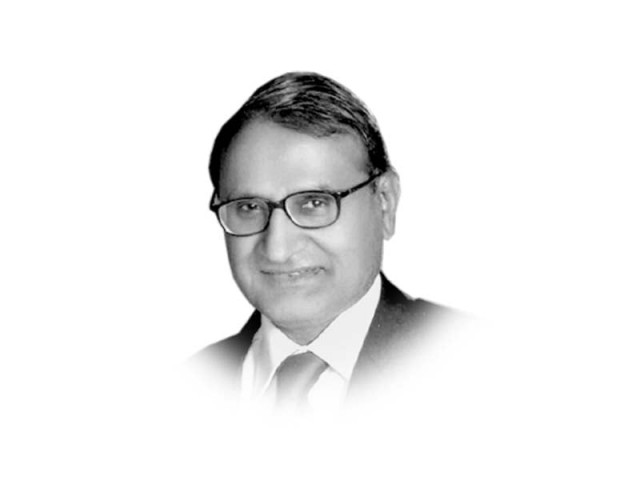The day the bench broke
The whole idea of the Dam Fund was an example of judicial overreach

An important issue before the Supreme Court bench that broke was the inability of the government to provide Rs20 billion for their conduct of elections in Punjab. The media reported CJP’s observation that the salaries could be slashed by 5% to fund the polls without disturbing the internationally known Fund mentioned by the Attorney General. Talking of Funds, one of CJP’s predecessors had set up the Supreme Court of Pakistan and the Prime Minister of Pakistan Diamer-Bhasha and Mohmand Dams Fund in 2018. In January this year, a now familiar bench headed by CJP, including Justice Ijazul Ahsan and Justice Jamal Khan Mandokhel, reviewed its status. The court was informed that not a rupee had been spent on the dams. Donations were deposited in a State Bank account, while Dam Fund has become an investment account operated through the National Bank. Investment was made in the safest avenue i.e. 3-month Market Treasury Bills financing the bloated fiscal deficit of the Government of Pakistan. Secretaries of the same government told standard stories of financial constraints for not doing their own bit on dams in January. Predictably, these same stories will be repeated before the bench to be fixed again.
The whole idea of the Dam Fund was an example of judicial overreach, with no understanding of how projects costing hundreds of billions of rupees are financed. On February 9, 2023 the total collection stood at Rs11.46 billion, 16.6% from overseas and the larger portion domestically. Of the total domestic donations, 26.5% came from 10 institutions. Among these, the largest contribution of a little over a billion rupees was from the employees of the Government of Punjab, followed by the security establishment with a little under a billion rupees. From the private sector, Bahria Town took the lead and became the third largest donor with a contribution of Rs110. 13 million. The largest individual donor was Muhammad Ali Tabba of Lucky Cement. The list also included Sardar Tanveer Ilyas Khan, the current PM of AJK who contributed Rs20 million.
In the January hearing before the Supreme bench, the CJP did not allow the use of the Dam Fund for flood victims. His honour wanted it reserved for the purchase of machinery for the dams. With the addition of interest earned on investment, the Dam Fund increased from Rs11.46 billion to Rs16.35 billion. It is likely to touch Rs17 billion when investments mature by April-May. Even this enhanced amount is too small to buy the machinery. As most of it has to be imported, the cost will be a lot more in these days of super depreciation of the dollar and import constraints. Instead of 5% deduction of salaries including the judges’ enviable salaries will be too harsh with hyperinflation knocking at the door. By a not so strange coincidence, the list of donors broadly reflects the support base of the party demanding elections in Punjab. It includes the then Government of Punjab, the miltablishment, Muhammad Asif Panjwani (PTI Charity Cup) from Mozambique and thousands of others like him from overseas. The list of donations through Debit/Credit Card on SBP website as of February 1, 2019 using MCB Payment Gateway shows the Supreme Court of Pakistan contributing Rs30,000 from France on October 9, 2018 at 13:02, Don Haque contributing Rs10,000 from India on November 9, 2018 at 0:28 and, the most notable of all, “CJ Saqib Nisar PKR 1 Pakistan 11/27/2018 15:10.”
Let this money be diverted to elections, lordships. The dam broke before being built.
Published in The Express Tribune, March 31st, 2023.
Like Opinion & Editorial on Facebook, follow @ETOpEd on Twitter to receive all updates on all our daily pieces.

















COMMENTS
Comments are moderated and generally will be posted if they are on-topic and not abusive.
For more information, please see our Comments FAQ